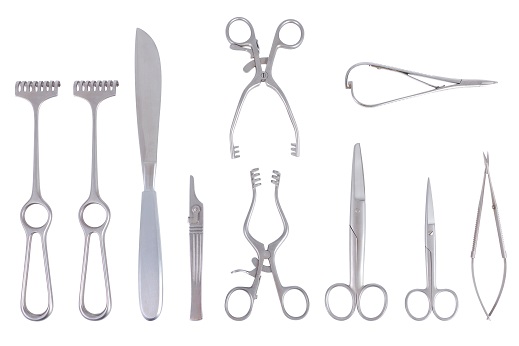Highly reflective instruments can produce glare under intense surgical lighting, creating distractions and reducing visibility for surgeons during critical procedures.
Wet blasting adds a uniform texture to the surface of surgical-grade stainless steels, titanium, and other medical alloys.
The result…
✅ A uniform, fine-textured, non-reflective finish: Wet blasting achieves a controlled, homogeneous matte or satin surface ideal for reducing surgical glare
✅ No embedded abrasive particles: The water in wet blasting acts as a buffer, continuously flushing abrasives and contaminants away from the workpiece, preventing particle embedment
✅ No distortion, peening, or surface deformation: Unlike dry blasting, wet blasting preserves precision tolerances and sharp edges on fine surgical instruments
✅ Consistent finish on complex geometries and internal surfaces: Wet blasting can reach tight recesses, flow through-holes, and intricate features, ensuring a consistent surface texture even on complex multi-axis machined components or cannulated instruments
If you’re involved in medtech manufacturing, surgical instrument development, or medical device quality assurance, it’s worth a fresh look at how modern wet blasting techniques can optimise your device performance and regulatory readiness.























